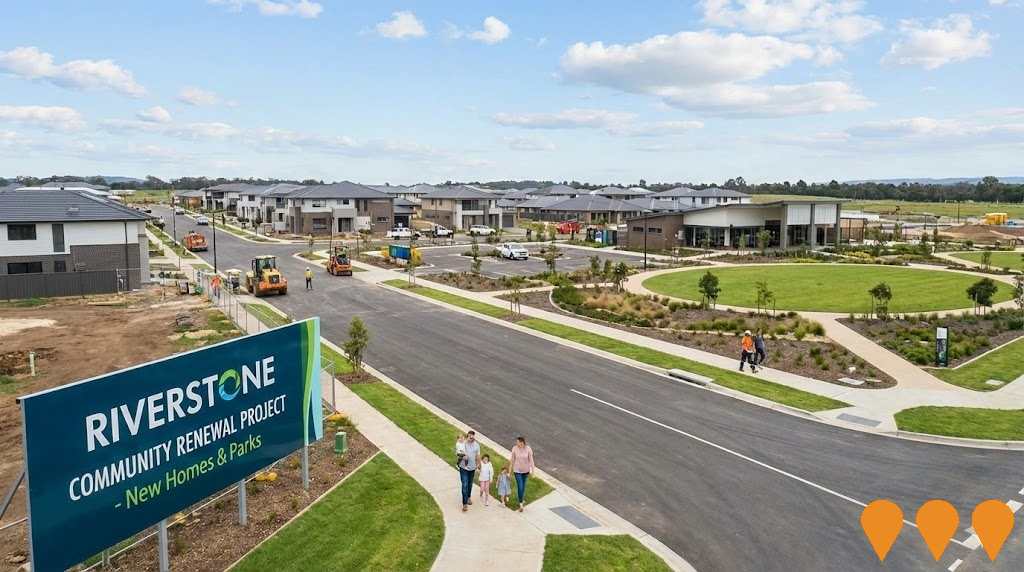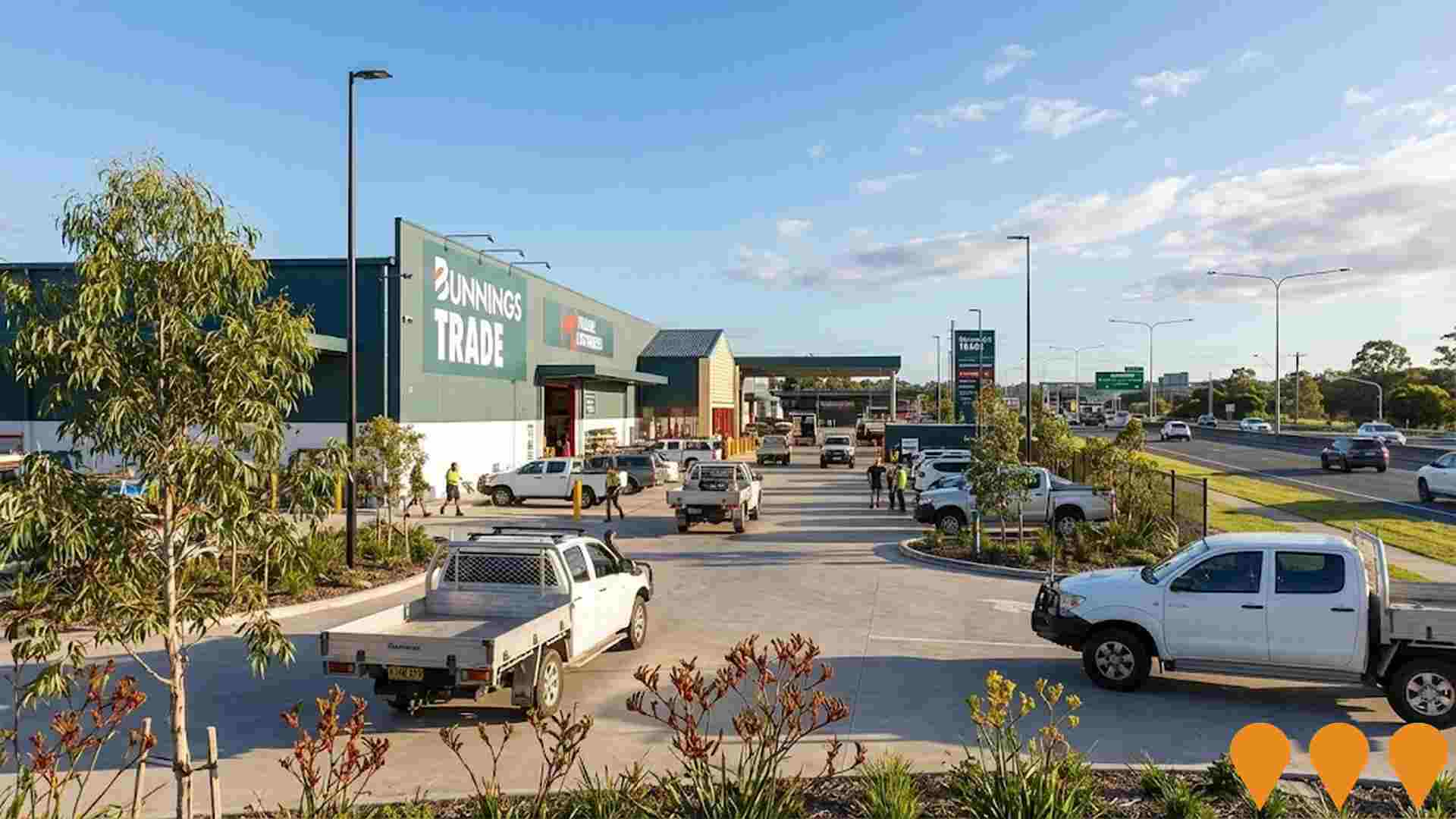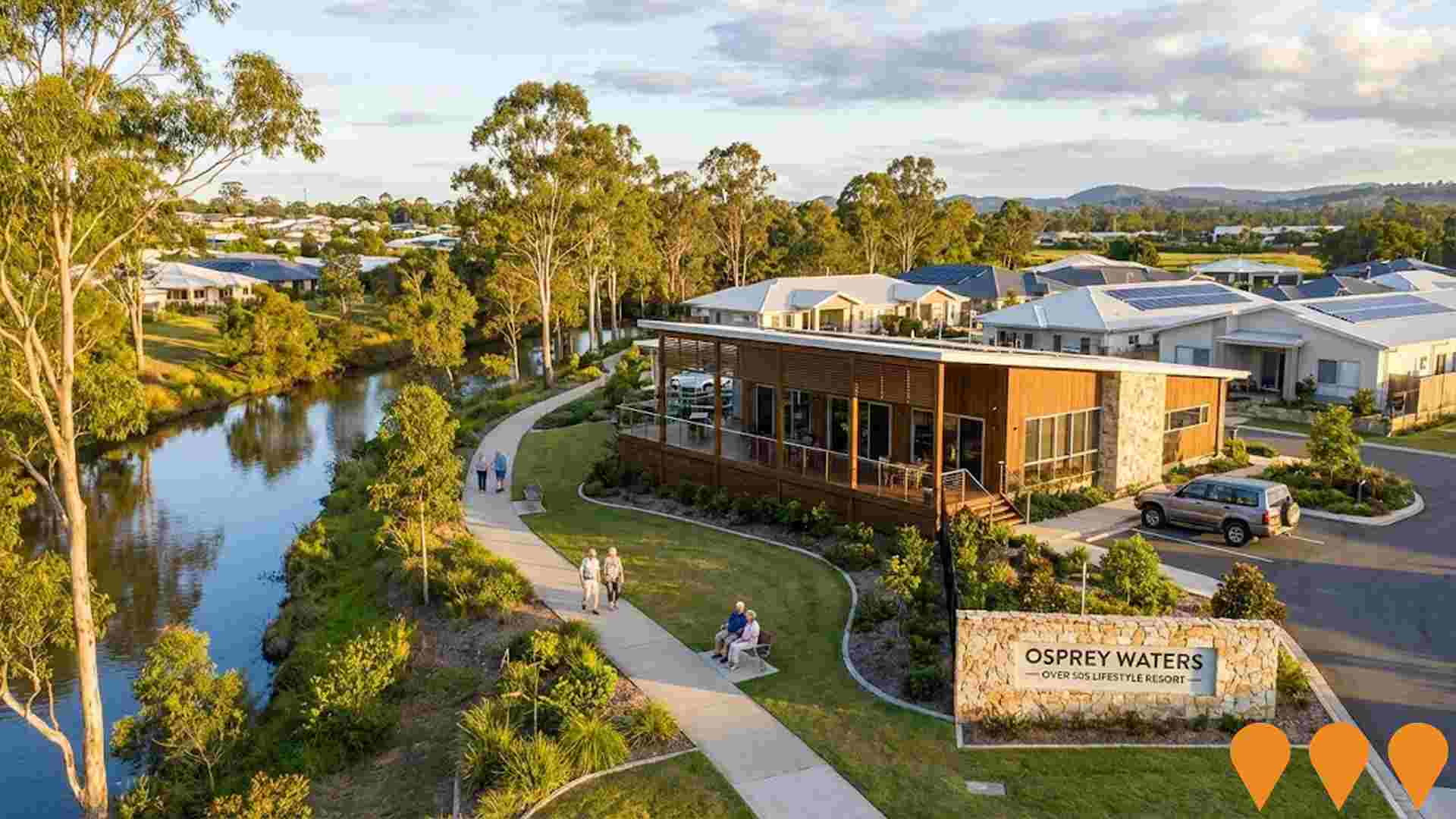Chart Color Schemes
est. as @ -- *
ABS ERP | -- people | --
2021 Census | -- people
Sales Activity
Curious about local property values? Filter the chart to assess the volume and appreciation (including resales) trends and regional comparisons, or scroll to the map below view this information at an individual property level.
Find a Recent Sale
Sales Detail
Population
An assessment of population growth drivers in Beenleigh reveals an overall ranking slightly below national averages considering recent, and medium term trends
Beenleigh's population is approximately 8,947 as of Aug 2025. This figure represents an increase of 522 people since the 2021 Census, which recorded a population of 8,425. The growth is inferred from ABS data: an estimated resident population of 8,938 in June 2024 and an additional 44 validated new addresses since the Census date. This results in a population density ratio of 1,166 persons per square kilometer, comparable to averages across other locations assessed by AreaSearch. Beenleigh's growth rate of 6.2% since the census is within 2.4 percentage points of the national average (8.6%), indicating strong growth fundamentals. Overseas migration contributed approximately 57.9% of overall population gains in recent periods.
For projections, AreaSearch uses ABS/Geoscience Australia data released in 2024 with a base year of 2022 for each SA2 area. For areas not covered and years post-2032, Queensland State Government's SA2 area projections from 2023, based on 2021 data, are adopted. These state projections do not provide age category splits, so AreaSearch applies proportional growth weightings in line with ABS Greater Capital Region projections released in 2023 and based on 2022 data for each age cohort. Future demographic trends project an above median population growth for the area, with an expected expansion of 1,629 persons to 2041, representing an increase of 18.1% over the 17-year period.
Frequently Asked Questions - Population
Development
AreaSearch analysis of residential development drivers sees Beenleigh recording a relatively average level of approval activity when compared to local markets analysed countrywide
Beenleigh has recorded approximately 26 residential properties granted approval each year over the past five financial years, totalling 134 homes. As of FY-26, 11 approvals have been recorded. On average, 2.8 new residents per year are gained for each dwelling built between FY-21 and FY-25, reflecting robust demand that supports property values. New homes are being built at an average construction cost value of $405,000, in line with regional trends.
This financial year has seen $54.6 million in commercial approvals, indicating strong commercial development momentum. Compared to Greater Brisbane, Beenleigh shows substantially reduced construction activity, with 70.0% below the regional average per person. This limited new supply generally supports stronger demand and values for established properties. This activity is also under the national average, suggesting the area's established nature and potential planning limitations. New development consists of 32.0% detached houses and 68.0% attached dwellings, marking a significant departure from existing housing patterns (currently 62.0% houses). This skew toward compact living offers affordable entry pathways and attracts downsizers, investors, and first-time purchasers. The location has approximately 364 people per dwelling approval, reflecting an established area.
Population forecasts indicate Beenleigh will gain 1,620 residents through to 2041. Should current construction levels persist, housing supply could lag population growth, likely intensifying buyer competition and underpinning price growth.
Frequently Asked Questions - Development
Infrastructure
Beenleigh has moderate levels of nearby infrastructure activity, ranking in the top 50% nationally
Changes to local infrastructure significantly influence an area's performance. AreaSearch identified 23 projects likely impacting the area. Key projects include Holmview Shopping Centre Expansion, Beenleigh Community Hub, Beenleigh Marketplace Enhancement, and Osprey Waters Retirement Village. The following list details those expected to be most relevant.
Professional plan users can use the search below to filter and access additional projects.
INFRASTRUCTURE SEARCH
 Denotes AI-based impression for illustrative purposes only, not to be taken as definitive under any circumstances. Please follow links and conduct other investigations from the project's source for actual imagery. Developers and project owners wishing us to use original imagery please Contact Us and we will do so.
Denotes AI-based impression for illustrative purposes only, not to be taken as definitive under any circumstances. Please follow links and conduct other investigations from the project's source for actual imagery. Developers and project owners wishing us to use original imagery please Contact Us and we will do so.
Frequently Asked Questions - Infrastructure
Yarrabilba Town Centre
Mixed-use town centre for the Yarrabilba masterplanned community, delivering approximately 30,000 mý of retail and commercial floorspace, civic facilities, higher-density residential apartments and improved east-west road connections. Forms the central hub of the 2,222-hectare Yarrabilba Priority Development Area.

Beenleigh Town Square
Completed town centre urban renewal project in the heart of Beenleigh that has transformed a former six way roundabout into a flexible civic plaza and community gathering space. The square includes a civic platform, pavilion structure that could accommodate a future cafe, event lawns, dedicated market space, public amenities, power and water services, and improved pedestrian connections to the wider Beenleigh Town Centre. It now regularly hosts markets, festivals and concerts and acts as a catalyst for broader Beenleigh streetscape upgrades, with construction works completed in early 2022 under the leadership of Logan City Council. Sources: Logan City Council Beenleigh Town Square project information, venue hire pack and internal record and category mapping. :contentReference[oaicite:0]{index=0} :contentReference[oaicite:1]{index=1}:contentReference[oaicite:2]{index=2}
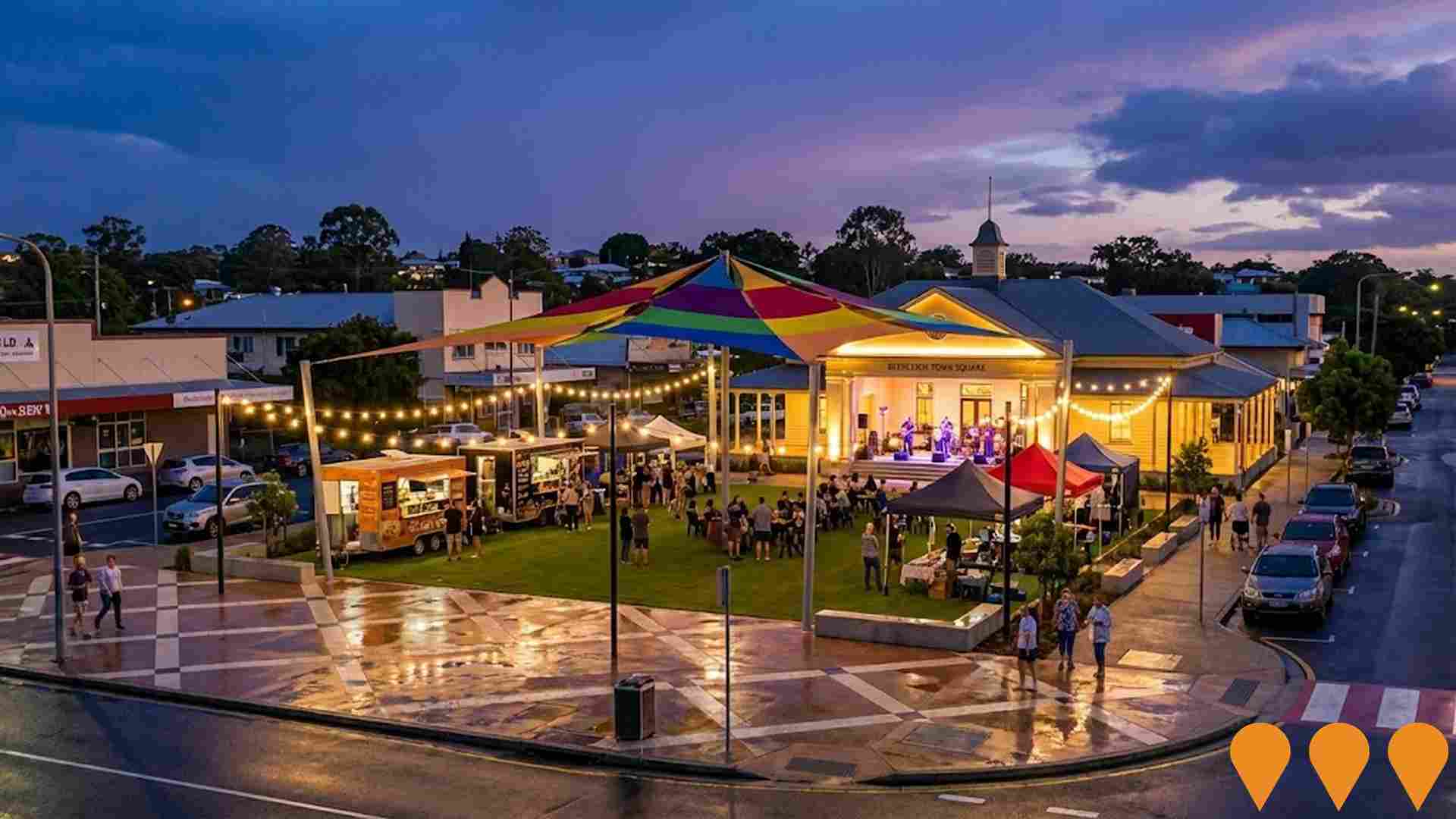
Distillery Road Market (DRM) Precinct Expansion
Completed expansion of the Distillery Road Market food, drink and entertainment precinct in Eagleby, anchored by the Zarraffas Coffee headquarters, The F.E.D. food and entertainment district, Perentie Brewing Co, covered market hall and outdoor entertainment spaces. The project delivers around 17,000 square metres of retail, hospitality and event space next to the Beenleigh Artisan Distillery, creating a regional destination between Brisbane and the Gold Coast with a regular program of markets, festivals and live music.

Beenleigh Marketplace Enhancement
Enhancement of established Beenleigh Marketplace with over 55 specialty stores. Improvements include expanded retail space, upgraded food court facilities, improved accessibility, and enhanced customer amenities to serve growing community needs.
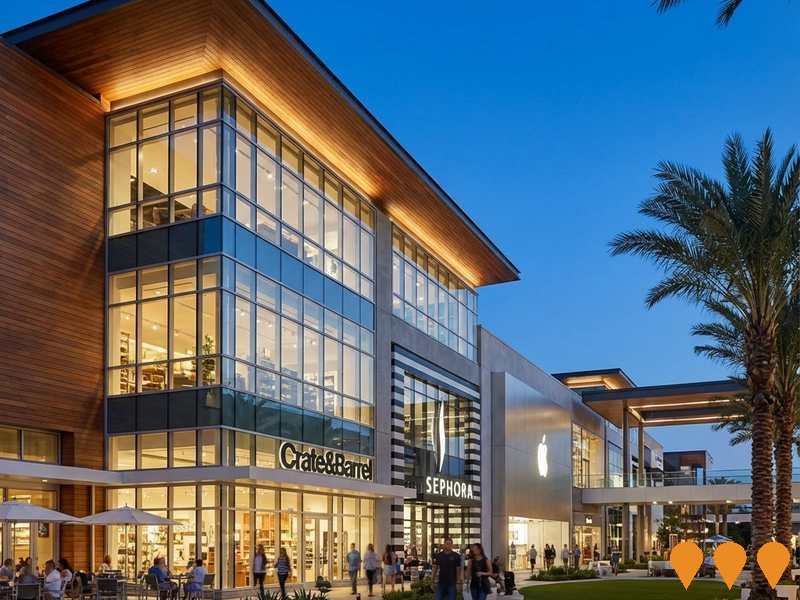
The Heights Bahrs Scrub
A master-planned residential community by Villawood Properties delivering over 1,000 lots with parks, future school site, and direct access to the M1.

Holmview Shopping Centre Expansion
Expansion of existing shopping centre to meet growing community demand. Plans include additional retail outlets, improved parking facilities, and enhanced customer amenities for the Holmview community.

Beenleigh Central Shopping Complex
New shopping complex featuring tavern and 10 retail outlets with exceptional dual street access and high visibility location. Developed to serve growing Beenleigh retail demand with modern facilities and ample parking.

Southwest Medical Precinct
Integrated medical precinct providing comprehensive healthcare services to growing Southwest Logan community. Includes specialist consulting suites, diagnostic facilities, and allied health services.
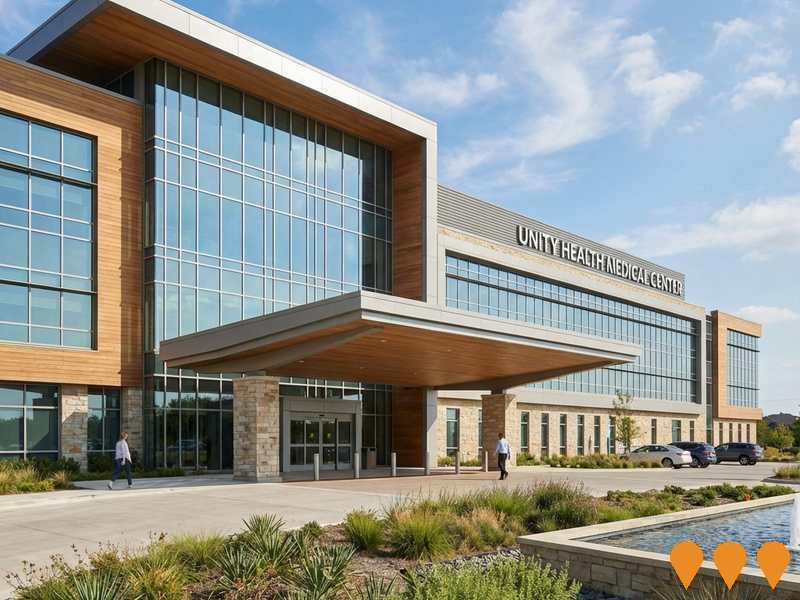
Employment
Employment performance in Beenleigh has been below expectations when compared to most other areas nationally
Beenleigh's workforce is balanced across white and blue-collar jobs. The construction sector stands out with a high representation.
The unemployment rate was 7.5% in June 2025, which is 3.4% higher than Greater Brisbane's rate of 4.1%. Employment growth over the past year was estimated at 5.9%. As of June 2025, 4,430 residents are employed. Workforce participation in Beenleigh lags behind Greater Brisbane, at 52.1% compared to 64.5%.
Residents' employment is concentrated in construction, health care & social assistance, and manufacturing. Construction employment share is 1.6 times the regional level. Professional & technical services employ only 4.4% of local workers, below Greater Brisbane's 8.9%. The worker-to-resident ratio is 0.8, indicating a higher-than-average level of local employment opportunities. Between June 2024 and June 2025, employment increased by 5.9%, while the labour force grew by 4.9%, reducing the unemployment rate by 0.9 percentage points. In contrast, Greater Brisbane saw employment rise by 4.4% and unemployment fall by 0.4 percentage points during the same period. Jobs and Skills Australia's national employment forecasts from May 2025 project a 6.6% increase over five years and 13.7% over ten years. Applying these projections to Beenleigh's employment mix suggests local growth of approximately 5.9% over five years and 12.6% over ten years, though this is a simplified extrapolation for illustrative purposes only.
Frequently Asked Questions - Employment
Income
The area's income levels rank in the lower 15% nationally based on AreaSearch comparative data
Beenleigh's median taxpayer income in financial year 2022 was $45,372. The average income stood at $50,725 during the same period. Both figures were below the national averages of $55,645 and $70,520 respectively for Greater Brisbane. By September 2025, estimated median and average incomes in Beenleigh would be approximately $51,720 and $57,821 based on a 13.99% growth since financial year 2022. Census data indicates that household, family, and personal incomes in Beenleigh fall between the 10th and 18th percentiles nationally. Income distribution shows that 28.4% of individuals earn between $1,500 and $2,999 annually, with 2,540 people falling into this category. This is consistent with broader regional trends where 33.3% of individuals earn within the same income bracket. Housing affordability pressures are severe in Beenleigh, with only 78.2% of income remaining after housing costs, ranking at the 8th percentile nationally.
Frequently Asked Questions - Income
Housing
Beenleigh displays a diverse mix of dwelling types, with a higher proportion of rental properties than the broader region
Beenleigh's dwelling structure, as per the latest Census, consisted of 62.5% houses and 37.5% other dwellings. Brisbane metro had 78.9% houses and 21.1% other dwellings. Home ownership in Beenleigh was at 18.0%, with mortgaged dwellings at 27.5% and rented ones at 54.6%. The median monthly mortgage repayment was $1,387, below Brisbane metro's average of $1,560. Median weekly rent in Beenleigh was $300, compared to Brisbane metro's $340. Nationally, Beenleigh's mortgage repayments were lower at $1,387 than the Australian average of $1,863, and rents were substantially below the national figure of $375.
Frequently Asked Questions - Housing
Household Composition
Beenleigh features high concentrations of lone person households and group households, with a lower-than-average median household size
Family households constitute 58.9% of all households, including 19.4% couples with children, 20.6% couples without children, and 17.3% single parent families. Non-family households account for the remaining 41.1%, with lone person households at 36.7% and group households comprising 4.3%. The median household size is 2.3 people, which is smaller than the Greater Brisbane average of 2.6.
Frequently Asked Questions - Households
Local Schools & Education
Educational outcomes in Beenleigh fall within the lower quartile nationally, indicating opportunities for improvement in qualification attainment
The area faces educational challenges, with university qualification rates at 11.7%, significantly below the Greater Brisbane average of 30.5%. This presents both a challenge and an opportunity for targeted educational initiatives. Bachelor degrees are the most common at 8.3%, followed by postgraduate qualifications (2.1%) and graduate diplomas (1.3%). Trade and technical skills are prominent, with 43.9% of residents aged 15+ holding vocational credentials – advanced diplomas (10.2%) and certificates (33.7%).
Educational participation is high, with 30.4% of residents currently enrolled in formal education. This includes 10.7% in primary education, 8.9% in secondary education, and 3.4% pursuing tertiary education. Beenleigh's four schools have a combined enrollment reaching 4,029 students as of the latest data. The area demonstrates typical Australian school conditions (ICSEA: 975) with balanced educational opportunities. Educational provision is split between two primary and two secondary institutions. As an education hub, the area offers 45.0 school places per 100 residents, significantly above the regional average of 16.1, attracting students from surrounding communities.
Frequently Asked Questions - Education
Schools Detail
Nearby Services & Amenities
Transport
Transport servicing is high compared to other areas nationally based on assessment of service frequency, route connectivity and accessibility
Beenleigh has 50 active public transport stops operating, offering a mix of train and bus services. These stops are served by 48 individual routes, collectively facilitating 3,854 weekly passenger trips. Transport accessibility is rated as good, with residents typically residing 239 meters from the nearest stop.
Service frequency averages 550 trips per day across all routes, translating to approximately 77 weekly trips per individual stop.
Frequently Asked Questions - Transport
Transport Stops Detail
Health
Health performance in Beenleigh is a key challenge with a range of health conditions having marked impacts on both younger and older age cohorts
Beenleigh faces significant health challenges, with various conditions affecting both younger and older residents. Approximately 46% of Beenleigh's total population (~4,133 people) has private health cover, compared to Greater Brisbane's 49.1% and the national average of 55.3%. Mental health issues and asthma are the most prevalent conditions in Beenleigh, impacting 12.5% and 10.2% of residents respectively.
Conversely, 58.8% of residents report no medical ailments, compared to Greater Brisbane's 63.1%. Beenleigh has a higher proportion of seniors aged 65 and over at 17.1% (1,530 people), compared to Greater Brisbane's 16.1%. The health outcomes among seniors in Beenleigh are broadly aligned with the general population's health profile.
Frequently Asked Questions - Health
Cultural Diversity
The level of cultural diversity witnessed in Beenleigh was found to be above average when compared nationally for a number of language and cultural background related metrics
Beenleigh's population shows higher than average cultural diversity, with 11.1% speaking a language other than English at home and 25.1% born overseas. Christianity is the dominant religion in Beenleigh, comprising 45.6% of its population. Notably, the 'Other' religious category represents 1.3%, slightly higher than Greater Brisbane's 1.4%.
In terms of ancestry, the top three groups are English (29.8%), Australian (25.7%), and Other (8.0%). Some ethnic groups show notable differences: Maori is overrepresented at 2.9% in Beenleigh compared to 3.0% regionally, New Zealand is slightly underrepresented at 1.5%, and Samoan representation is identical at 1.1%.
Frequently Asked Questions - Diversity
Age
Beenleigh's population is slightly younger than the national pattern
Beenleigh's median age is 38 years, slightly higher than Greater Brisbane's 36 but equal to Australia's 38 years. The 55-64 age group constitutes 12.8% of Beenleigh's population compared to Greater Brisbane, while the 35-44 cohort makes up 12.2%. Between 2021 and now, the 75 to 84 age group has increased from 4.5% to 6.0% of the population. Conversely, the 15 to 24 age group has decreased from 13.5% to 12.5%. By 2041, demographic projections show significant shifts in Beenleigh's age structure. The 75 to 84 age group is expected to grow by 66%, reaching 896 people from the current 538. Those aged 65 and above are projected to comprise 54% of population growth. Meanwhile, the 35-44 and 0-4 age groups are expected to experience population declines.

